#phanar
Explore tagged Tumblr posts
Photo




Some random Far Frozen yeti designs
244 notes
·
View notes
Text

1 note
·
View note
Text

Sunshine squeezing through the windows of the Patriarchal Church in Istanbul’s Phanar neighbourhood, Turkey. Photo: Facebook / World Council of Churches
14 notes
·
View notes
Text




Phanar Greek Orthodox College or Phanar Roman Orthodox Lyceum, known in Greek as the Great School of the Nation and Patriarchal Academy of Constantinople (Greek: Μεγάλη του Γένους Σχολή, Megáli toú Genous Scholí), is the oldest surviving and most prestigious Greek Orthodox school in Istanbul, Turkey. The school, like all minority schools in Turkey, is a secular school.
40 notes
·
View notes
Text
Saints&Reading: Friday, December 28, 2023
december 16_december 28
THE HOLY PROPHET AGGEI/HAGGAI (500 B.C.)
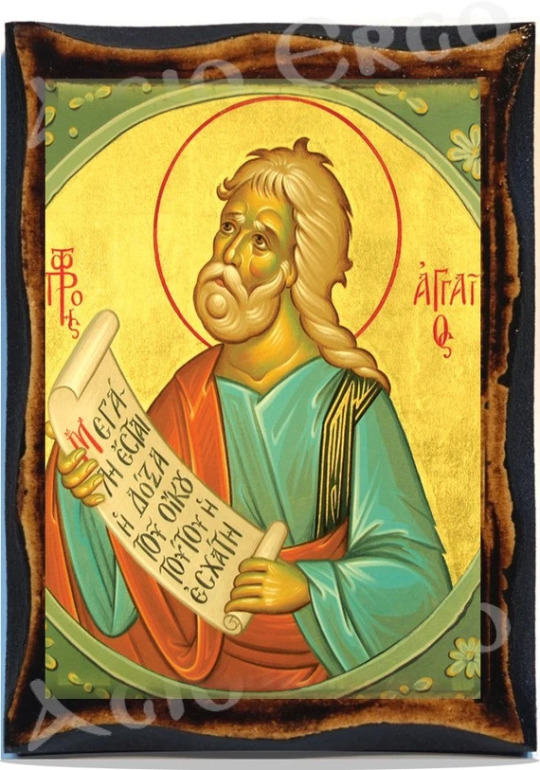
The Holy Prophet Haggai was the tenth of the Twelve Minor Prophets. He was of the Tribe of Levi and he prophesied during the times of the Persian emperor Darius Hystaspis (prior to 500 B.C.). Upon the return of the Jews from the Babylonian Captivity, he persuaded the people to build the Second Temple at Jerusalem, and he proclaimed that the Messiah would appear in this Temple in the last times.
It is believed that Haggai was buried with the priests at Jerusalem, since he was descended from Aaron.
THE BLESSED EMPRESS THEOPHANIA OF BYZANTUM (893)
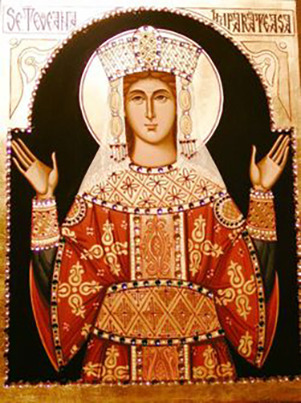
Saint Theophanó was a pious and virtuous Empress, who was greatly praised by the chroniclers of her time because of her evangelical life, her almsgiving, and her exceptional piety. She born in Constantinople, the daughter of Constantine Martinakios and his wife Anna, who raised their daughter with diligence. When she was of a marriageable age, Emperor Basil the Macedonian chose her to be the wife of his son Leo the Wise (886 - 912), with whom she dwelt in marital fidelity for twelve years.
The Holy Empress Theophanó and her husband Leo were imprisoned for three years, because Leo was falsely accused of plotting to assassinate his father, Emperor Basil. After obtaining her freedom,Theophanó spent her life in prayer and fasting, earnestly struggling for her salvation. She was recognized as a Saint and a wonderworker, even during her lifetime, because of the many good works which she performed out of love for her neighbor.
Though she lived in the world, she renounced everything worldly, and became a benefactor of the poor. She also built churches and monasteries, or restored those in need of repair. She was a true mother to her subjects, caring for widows and orphans, and consoling the sorrowful.
Despite all the grandeur and wealth surrounding her, she preserved her customary humility and modesty. She preferred to dress in simple clothing so that she would not recognized. Accompanied by two trusted servants, she would visit the homes of the poor and the persecuted, offering her assistance. Her faith was such that she was found worthy of the gift of performing miracles. When medical science gave up on a patient because it could not heal him, Saint Theophanó restored him to health. In spite of all the bitterness she had experienced in her life, Saint Theophanó could still sing praises to the Lord, according to the words of the Prophet King David: "Sing praises to the Lord, sing praises; sing praises to our King, sing praises" (Psalm 46/47:6).
Saint Theophanó reposed circa 893-894. Even before her death, her husband started to build a church, intending to dedicate it to Theophanó, but she forbade him to do so. It was Emperor Leo who decreed that the Sunday after Pentecost be dedicated to All Saints. Believing his wife to be one of the righteous, he knew that she would also be honored whenever the Feast of All Saints was celebrated.
The incorrupt relics of Saint Theophanó are preserved in the Patriarchal Church of Saint George, at the Phanar in Constantinople. A particle from her relics is in Dionysiou Monastery on Mount Athos.
Source: Orthoodox Church in America_OCA
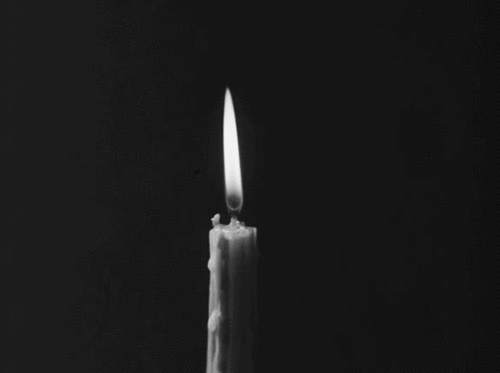
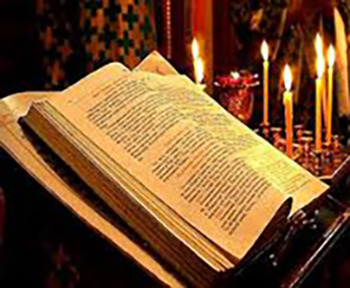
HEBREWS 11:8,11:16
8 By faith Abraham obeyed when he was called to go out to the place which he would receive as an inheritance. And he went out, not knowing where he was going. 11 By faith Sarah herself also received strength to conceive seed, and she bore a child when she was past the age, because she judged Him faithful who had promised. 12 Therefore from one man, and him as good as dead, were born as many as the stars of the sky in multitude-innumerable as the sand which is by the seashore. 13 These all died in faith, not having received the promises, but having seen them afar off were assured of them, embraced them and confessed that they were strangers and pilgrims on the earth. 14 For those who say such things declare plainly that they seek a homeland. 15 And truly if they had called to mind that country from which they had come out, they would have had opportunity to return. 16 But now they desire a better, that is, a heavenly country. Therefore God is not ashamed to be called their God, for He has prepared a city for them.
MARK 9:33-41
33 Then He came to Capernaum. And when He was in the house He asked them, "What was it you disputed among yourselves on the road?" 34 But they kept silent, for on the road they had disputed among themselves who would be the greatest. 35 And He sat down, called the twelve, and said to them, "If anyone desires to be first, he shall be last of all and servant of all." 36 Then He took a little child and set him in the midst of them. And when He had taken him in His arms, He said to them, 37 Whoever receives one of these little children in My name receives Me; and whoever receives Me, receives not Me but Him who sent Me. 38 Now John answered Him, saying, "Teacher, we saw someone who does not follow us casting out demons in Your name, and we forbade him because he does not follow us." 39 But Jesus said, "Do not forbid him, for no one who works a miracle in My name can soon afterward speak evil of Me. 40 For he who is not against us is on our side. 41 For whoever gives you a cup of water to drink in My name, because you belong to Christ, assuredly, I say to you, he will by no means lose his reward.
#orthodoxy#orthodoxchristianity#easternorthodoxchurch#originofchristianity#spirituality#holyscriptures#gospel#wisdom#bible#saints
2 notes
·
View notes
Photo

Galata Bridge to Ayub
EXCURSIONS
The best way to see the Golden Horn is by going up it in a fair-sized caique pulled by two men. Fare 15 to 20 piastres (2s. 6d. to 3s. 4d.) there and back. The small steamers plying between Galata Bridge and the various stations on the Inner Horn are both uncomfortable and dirty, and on account of their awnings utterly unsuitable for sight-seeing. Fare (Galata Bridge to Ayub) 50 paras (2nd.).
The Golden Horn, or Bay of Constantinople, extends from its junction with the Bosporus at Seraglio Point to a spot away up the harbour, called the Khlyat Haneh or Sweet Waters of Europe, at the confluence of two small streams, the Kedaris or Ali bey Suyu, and the Vorvlsses or Khlyat Haneh Silyu, and separates Galata and Pera from the Stambul side of the city. Its names of Keratios Kolpos (The Horn Gulf) and Chrysokeras (Golden Horn) are derived from the resemblance of this arm of the Bosporus to the shape of a ram’s horn.
The Golden Horn is some six miles long, with an average width of about 490 yards, and a mean depth of twenty-three fathoms, and is spanned by two bridges. In olden times it was closed during the various sieges by a chain stretched across it, from Seraglio Point to Galata.
The most interesting suburbs on the Golden Horn are—Galata, Pera, Kassim Pasha, Phanar, Balata, Haskeui and Ayub.
Galata was originally known under the name of Sykce (fig-trees), presumably from a grove of fig- trees having once existed there; but the place was afterwards called Galata, from the Gauls who formed a settlement there ; and this name has clung to it throughout its subsequent occupation by the Genoese, down to the present day. Galata is now the place where the banks, steamship agencies, stock exchange, and offices of agents and representatives of European firms are established. The old Genoese walls which formerly enclosed Galata have been pulled down years ago to make way for the erection of modern buildings, and scarcely a vestige of them now remains.
0 notes
Photo

Galata Bridge to Ayub
EXCURSIONS
The best way to see the Golden Horn is by going up it in a fair-sized caique pulled by two men. Fare 15 to 20 piastres (2s. 6d. to 3s. 4d.) there and back. The small steamers plying between Galata Bridge and the various stations on the Inner Horn are both uncomfortable and dirty, and on account of their awnings utterly unsuitable for sight-seeing. Fare (Galata Bridge to Ayub) 50 paras (2nd.).
The Golden Horn, or Bay of Constantinople, extends from its junction with the Bosporus at Seraglio Point to a spot away up the harbour, called the Khlyat Haneh or Sweet Waters of Europe, at the confluence of two small streams, the Kedaris or Ali bey Suyu, and the Vorvlsses or Khlyat Haneh Silyu, and separates Galata and Pera from the Stambul side of the city. Its names of Keratios Kolpos (The Horn Gulf) and Chrysokeras (Golden Horn) are derived from the resemblance of this arm of the Bosporus to the shape of a ram’s horn.
The Golden Horn is some six miles long, with an average width of about 490 yards, and a mean depth of twenty-three fathoms, and is spanned by two bridges. In olden times it was closed during the various sieges by a chain stretched across it, from Seraglio Point to Galata.
The most interesting suburbs on the Golden Horn are—Galata, Pera, Kassim Pasha, Phanar, Balata, Haskeui and Ayub.
Galata was originally known under the name of Sykce (fig-trees), presumably from a grove of fig- trees having once existed there; but the place was afterwards called Galata, from the Gauls who formed a settlement there ; and this name has clung to it throughout its subsequent occupation by the Genoese, down to the present day. Galata is now the place where the banks, steamship agencies, stock exchange, and offices of agents and representatives of European firms are established. The old Genoese walls which formerly enclosed Galata have been pulled down years ago to make way for the erection of modern buildings, and scarcely a vestige of them now remains.
0 notes
Photo
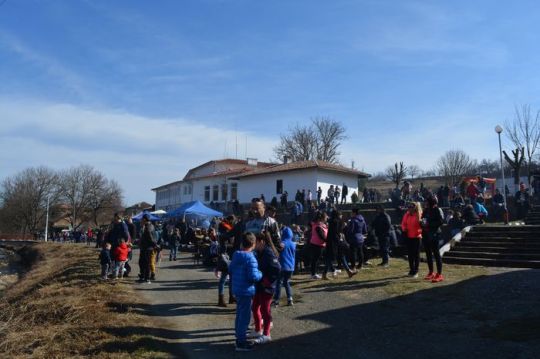
Existence by the Koran
Fountains.—These are a Turkish institution called into existence by the Koran, which enjoins all true believers to abstain from the use of intoxicating beverages, and to perform the regular ablutions before entering the mosque for prayer; fountains are therefore an indispensable adjunct to every large mosque. They may be divided into two classes—the Chesmeh, or fountain, and the Sebil, or drinking fountain, provided with metal cups, The handsomest of the Chesmehs is The Fountain of Sultan Ahmed, opposite the Bab-i-Hum ay tin and St. Sophia. It is a rectangular building, erected in 1728 by Sultan Ahmed IIL, and is a Cbesmeb and Sebil combined, consisting of four Chesmehs and four Sebils arranged in alternate order. It is ornamented with some beautiful carved arabesques, and with inscriptions in gilt letters on a green background, a delicate border of green tiles running along the upper part. The inscription just above the tap on one of its sides is in verse, composed by the founder, Sultan Ahmed III., and runs thus: ‘Wayfarer, admire this beautiful work; turn the tap in the name of God; drink thy fill and bless the founder, Ahmed Khan.’
There are several other fountains, notably those at Azab Kapu, near the upper bridge, and at Top- Haneh (the latter now in ruins), both erected by Ahmed III., and the Yalideh Mosque fountain at Ak-Sarai, but all inferior to that of Sultan Ahmed. The following Sebils are worthy of notice: Azab Kapu Sebil, in connection with the fountain; Sebil of Sultan Hamid I., on the line of tramway near Sirkedji railway station; Sebil of Sultan Mahmud II., adjoining bis mausoleum; Sebil of Shah-Zadeh Mosque, and the Yalideb Mosque Sebil, near the Stambul end of Galata Bridge.
WALLS
Very little now remains of the walls that formerly enclosed Byzantium on the two seaward sides. They have for the most part either been pulled down to make room for modern buildings, or have fallen into decay and crumbled away, and are now disappearing fast. Those on the land side, however, extending across the peninsula from the Seven Towers on the Marmora, to Ayub on the Golden Horn, a distance of five miles, are, despite the ravages of time and earthquakes, still in a fair state of preservation.
A good plan for visitors wishing to avoid the shaking and jolting over the wretched streets leading to the walls, is to have a carriage, or horses, sent to meet them at the Seven Towers, and go on to this latter place by caique or train. They should then drive along the land walls as far as the Adrianople Gate, send the carriage on to meet them at Aivan Sarai, and walk to the Mosaic Mosque; thence inside the walls to Kerkoporta, Tekfur Sami, Hebdomon and Blachernce (Aivan Sarai), where they can get into the carriage and drive back to Pera, either through Phanar, where they can stop and see the Greek Patriarchate and the Greek Church of St. George, or by way of Ayub and the Sweet Waters of Europe. This excursion takes from four to five flours. Carriage 45 to 60 piastres.
0 notes
Photo

Galata Bridge to Ayub
EXCURSIONS
The best way to see the Golden Horn is by going up it in a fair-sized caique pulled by two men. Fare 15 to 20 piastres (2s. 6d. to 3s. 4d.) there and back. The small steamers plying between Galata Bridge and the various stations on the Inner Horn are both uncomfortable and dirty, and on account of their awnings utterly unsuitable for sight-seeing. Fare (Galata Bridge to Ayub) 50 paras (2nd.).
The Golden Horn, or Bay of Constantinople, extends from its junction with the Bosporus at Seraglio Point to a spot away up the harbour, called the Khlyat Haneh or Sweet Waters of Europe, at the confluence of two small streams, the Kedaris or Ali bey Suyu, and the Vorvlsses or Khlyat Haneh Silyu, and separates Galata and Pera from the Stambul side of the city. Its names of Keratios Kolpos (The Horn Gulf) and Chrysokeras (Golden Horn) are derived from the resemblance of this arm of the Bosporus to the shape of a ram’s horn.
The Golden Horn is some six miles long, with an average width of about 490 yards, and a mean depth of twenty-three fathoms, and is spanned by two bridges. In olden times it was closed during the various sieges by a chain stretched across it, from Seraglio Point to Galata.
The most interesting suburbs on the Golden Horn are—Galata, Pera, Kassim Pasha, Phanar, Balata, Haskeui and Ayub.
Galata was originally known under the name of Sykce (fig-trees), presumably from a grove of fig- trees having once existed there; but the place was afterwards called Galata, from the Gauls who formed a settlement there ; and this name has clung to it throughout its subsequent occupation by the Genoese, down to the present day. Galata is now the place where the banks, steamship agencies, stock exchange, and offices of agents and representatives of European firms are established. The old Genoese walls which formerly enclosed Galata have been pulled down years ago to make way for the erection of modern buildings, and scarcely a vestige of them now remains.
0 notes
Photo
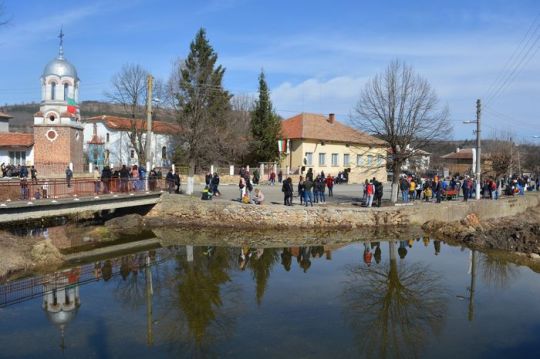
Existence by the Koran
Fountains.—These are a Turkish institution called into existence by the Koran, which enjoins all true believers to abstain from the use of intoxicating beverages, and to perform the regular ablutions before entering the mosque for prayer; fountains are therefore an indispensable adjunct to every large mosque. They may be divided into two classes—the Chesmeh, or fountain, and the Sebil, or drinking fountain, provided with metal cups, The handsomest of the Chesmehs is The Fountain of Sultan Ahmed, opposite the Bab-i-Hum ay tin and St. Sophia. It is a rectangular building, erected in 1728 by Sultan Ahmed IIL, and is a Cbesmeb and Sebil combined, consisting of four Chesmehs and four Sebils arranged in alternate order. It is ornamented with some beautiful carved arabesques, and with inscriptions in gilt letters on a green background, a delicate border of green tiles running along the upper part. The inscription just above the tap on one of its sides is in verse, composed by the founder, Sultan Ahmed III., and runs thus: ‘Wayfarer, admire this beautiful work; turn the tap in the name of God; drink thy fill and bless the founder, Ahmed Khan.’
There are several other fountains, notably those at Azab Kapu, near the upper bridge, and at Top- Haneh (the latter now in ruins), both erected by Ahmed III., and the Yalideh Mosque fountain at Ak-Sarai, but all inferior to that of Sultan Ahmed. The following Sebils are worthy of notice: Azab Kapu Sebil, in connection with the fountain; Sebil of Sultan Hamid I., on the line of tramway near Sirkedji railway station; Sebil of Sultan Mahmud II., adjoining bis mausoleum; Sebil of Shah-Zadeh Mosque, and the Yalideb Mosque Sebil, near the Stambul end of Galata Bridge.
WALLS
Very little now remains of the walls that formerly enclosed Byzantium on the two seaward sides. They have for the most part either been pulled down to make room for modern buildings, or have fallen into decay and crumbled away, and are now disappearing fast. Those on the land side, however, extending across the peninsula from the Seven Towers on the Marmora, to Ayub on the Golden Horn, a distance of five miles, are, despite the ravages of time and earthquakes, still in a fair state of preservation.
A good plan for visitors wishing to avoid the shaking and jolting over the wretched streets leading to the walls, is to have a carriage, or horses, sent to meet them at the Seven Towers, and go on to this latter place by caique or train. They should then drive along the land walls as far as the Adrianople Gate, send the carriage on to meet them at Aivan Sarai, and walk to the Mosaic Mosque; thence inside the walls to Kerkoporta, Tekfur Sami, Hebdomon and Blachernce (Aivan Sarai), where they can get into the carriage and drive back to Pera, either through Phanar, where they can stop and see the Greek Patriarchate and the Greek Church of St. George, or by way of Ayub and the Sweet Waters of Europe. This excursion takes from four to five flours. Carriage 45 to 60 piastres.
0 notes
Photo

Frankish or European
Pera, contiguous to Galata, and on the heights rising immediately above it, is the Frankish or European, quarter of the city, where the Europeans, Levantines, and a great part of the Greek and Armenian population live, and where all the hotels and the foreign embassies and consulates are situated.
Kassim Pasha is a filthy and insanitary suburb in the immediate vicinity of the dockyard, off which the Turkish fleet lies at anchor throughout the year. The fine marble building standing on a plot of land jutting out into the Golden Horn is the Admiralty. Close by are the graving-docks, slips, building sheds, and workshops, where, until recently, a considerable number of British foremen, mostly Scotchmen, were employed. The large building on the hill, immediately above the dockyard, is the Naval Hospital.
Kassim Pasha
Phanar, now a dirty and poor-looking suburb, lies on the Stambul side, opposite Kassim Pasha, and is chiefly inhabited by Greeks. Its name Phanarion, shortened by the Turks into Phanar or Phener, is a diminutive of javo; (a lantern).
Phanar is the seat of the Patriarch, the head of the Eastern or Greek Church; and here is situated the Greek Cathedral of St. George, in connection with the Patriarch’s residence. Travellers are freely admitted to the different rooms of the Patriarch’s official residence, in one of which visitors are shown a painting representing Sultan Muhammad II., the Conqueror, in his state robes, handing the patriarch Gennadius Scholarius the the river Vorvyses.
The mouth of the latter, called Kara Agatch, is the point where the steamers stop. The valley of the Sweet Waters of Europe is a favourite resort of natives, especially Turks, in spring and early summer, and can be reached by water, or by carriage from Pera. The better class of people, and ladies, always drive there. Travellers desirous of getting a glimpse of Turkish life should visit the spot on a fine Friday afternoon in spring. A good plan is to drive there from Pera and return by water, or vice versa. No Turkish ladies are to be seen there in Ramazan.
0 notes
Photo
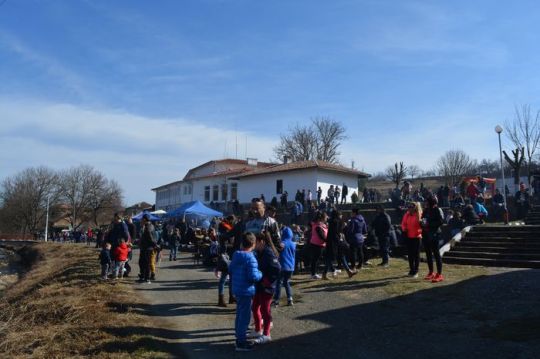
Existence by the Koran
Fountains.—These are a Turkish institution called into existence by the Koran, which enjoins all true believers to abstain from the use of intoxicating beverages, and to perform the regular ablutions before entering the mosque for prayer; fountains are therefore an indispensable adjunct to every large mosque. They may be divided into two classes—the Chesmeh, or fountain, and the Sebil, or drinking fountain, provided with metal cups, The handsomest of the Chesmehs is The Fountain of Sultan Ahmed, opposite the Bab-i-Hum ay tin and St. Sophia. It is a rectangular building, erected in 1728 by Sultan Ahmed IIL, and is a Cbesmeb and Sebil combined, consisting of four Chesmehs and four Sebils arranged in alternate order. It is ornamented with some beautiful carved arabesques, and with inscriptions in gilt letters on a green background, a delicate border of green tiles running along the upper part. The inscription just above the tap on one of its sides is in verse, composed by the founder, Sultan Ahmed III., and runs thus: ‘Wayfarer, admire this beautiful work; turn the tap in the name of God; drink thy fill and bless the founder, Ahmed Khan.’
There are several other fountains, notably those at Azab Kapu, near the upper bridge, and at Top- Haneh (the latter now in ruins), both erected by Ahmed III., and the Yalideh Mosque fountain at Ak-Sarai, but all inferior to that of Sultan Ahmed. The following Sebils are worthy of notice: Azab Kapu Sebil, in connection with the fountain; Sebil of Sultan Hamid I., on the line of tramway near Sirkedji railway station; Sebil of Sultan Mahmud II., adjoining bis mausoleum; Sebil of Shah-Zadeh Mosque, and the Yalideb Mosque Sebil, near the Stambul end of Galata Bridge.
WALLS
Very little now remains of the walls that formerly enclosed Byzantium on the two seaward sides. They have for the most part either been pulled down to make room for modern buildings, or have fallen into decay and crumbled away, and are now disappearing fast. Those on the land side, however, extending across the peninsula from the Seven Towers on the Marmora, to Ayub on the Golden Horn, a distance of five miles, are, despite the ravages of time and earthquakes, still in a fair state of preservation.
A good plan for visitors wishing to avoid the shaking and jolting over the wretched streets leading to the walls, is to have a carriage, or horses, sent to meet them at the Seven Towers, and go on to this latter place by caique or train. They should then drive along the land walls as far as the Adrianople Gate, send the carriage on to meet them at Aivan Sarai, and walk to the Mosaic Mosque; thence inside the walls to Kerkoporta, Tekfur Sami, Hebdomon and Blachernce (Aivan Sarai), where they can get into the carriage and drive back to Pera, either through Phanar, where they can stop and see the Greek Patriarchate and the Greek Church of St. George, or by way of Ayub and the Sweet Waters of Europe. This excursion takes from four to five flours. Carriage 45 to 60 piastres.
0 notes
Photo

Frankish or European
Pera, contiguous to Galata, and on the heights rising immediately above it, is the Frankish or European, quarter of the city, where the Europeans, Levantines, and a great part of the Greek and Armenian population live, and where all the hotels and the foreign embassies and consulates are situated.
Kassim Pasha is a filthy and insanitary suburb in the immediate vicinity of the dockyard, off which the Turkish fleet lies at anchor throughout the year. The fine marble building standing on a plot of land jutting out into the Golden Horn is the Admiralty. Close by are the graving-docks, slips, building sheds, and workshops, where, until recently, a considerable number of British foremen, mostly Scotchmen, were employed. The large building on the hill, immediately above the dockyard, is the Naval Hospital.
Kassim Pasha
Phanar, now a dirty and poor-looking suburb, lies on the Stambul side, opposite Kassim Pasha, and is chiefly inhabited by Greeks. Its name Phanarion, shortened by the Turks into Phanar or Phener, is a diminutive of javo; (a lantern).
Phanar is the seat of the Patriarch, the head of the Eastern or Greek Church; and here is situated the Greek Cathedral of St. George, in connection with the Patriarch’s residence. Travellers are freely admitted to the different rooms of the Patriarch’s official residence, in one of which visitors are shown a painting representing Sultan Muhammad II., the Conqueror, in his state robes, handing the patriarch Gennadius Scholarius the the river Vorvyses.
The mouth of the latter, called Kara Agatch, is the point where the steamers stop. The valley of the Sweet Waters of Europe is a favourite resort of natives, especially Turks, in spring and early summer, and can be reached by water, or by carriage from Pera. The better class of people, and ladies, always drive there. Travellers desirous of getting a glimpse of Turkish life should visit the spot on a fine Friday afternoon in spring. A good plan is to drive there from Pera and return by water, or vice versa. No Turkish ladies are to be seen there in Ramazan.
0 notes
Photo

Frankish or European
Pera, contiguous to Galata, and on the heights rising immediately above it, is the Frankish or European, quarter of the city, where the Europeans, Levantines, and a great part of the Greek and Armenian population live, and where all the hotels and the foreign embassies and consulates are situated.
Kassim Pasha is a filthy and insanitary suburb in the immediate vicinity of the dockyard, off which the Turkish fleet lies at anchor throughout the year. The fine marble building standing on a plot of land jutting out into the Golden Horn is the Admiralty. Close by are the graving-docks, slips, building sheds, and workshops, where, until recently, a considerable number of British foremen, mostly Scotchmen, were employed. The large building on the hill, immediately above the dockyard, is the Naval Hospital.
Kassim Pasha
Phanar, now a dirty and poor-looking suburb, lies on the Stambul side, opposite Kassim Pasha, and is chiefly inhabited by Greeks. Its name Phanarion, shortened by the Turks into Phanar or Phener, is a diminutive of javo; (a lantern).
Phanar is the seat of the Patriarch, the head of the Eastern or Greek Church; and here is situated the Greek Cathedral of St. George, in connection with the Patriarch’s residence. Travellers are freely admitted to the different rooms of the Patriarch’s official residence, in one of which visitors are shown a painting representing Sultan Muhammad II., the Conqueror, in his state robes, handing the patriarch Gennadius Scholarius the the river Vorvyses.
The mouth of the latter, called Kara Agatch, is the point where the steamers stop. The valley of the Sweet Waters of Europe is a favourite resort of natives, especially Turks, in spring and early summer, and can be reached by water, or by carriage from Pera. The better class of people, and ladies, always drive there. Travellers desirous of getting a glimpse of Turkish life should visit the spot on a fine Friday afternoon in spring. A good plan is to drive there from Pera and return by water, or vice versa. No Turkish ladies are to be seen there in Ramazan.
0 notes
Photo

Galata Bridge to Ayub
EXCURSIONS
The best way to see the Golden Horn is by going up it in a fair-sized caique pulled by two men. Fare 15 to 20 piastres (2s. 6d. to 3s. 4d.) there and back. The small steamers plying between Galata Bridge and the various stations on the Inner Horn are both uncomfortable and dirty, and on account of their awnings utterly unsuitable for sight-seeing. Fare (Galata Bridge to Ayub) 50 paras (2nd.).
The Golden Horn, or Bay of Constantinople, extends from its junction with the Bosporus at Seraglio Point to a spot away up the harbour, called the Khlyat Haneh or Sweet Waters of Europe, at the confluence of two small streams, the Kedaris or Ali bey Suyu, and the Vorvlsses or Khlyat Haneh Silyu, and separates Galata and Pera from the Stambul side of the city. Its names of Keratios Kolpos (The Horn Gulf) and Chrysokeras (Golden Horn) are derived from the resemblance of this arm of the Bosporus to the shape of a ram’s horn.
The Golden Horn is some six miles long, with an average width of about 490 yards, and a mean depth of twenty-three fathoms, and is spanned by two bridges. In olden times it was closed during the various sieges by a chain stretched across it, from Seraglio Point to Galata.
The most interesting suburbs on the Golden Horn are—Galata, Pera, Kassim Pasha, Phanar, Balata, Haskeui and Ayub.
Galata was originally known under the name of Sykce (fig-trees), presumably from a grove of fig- trees having once existed there; but the place was afterwards called Galata, from the Gauls who formed a settlement there ; and this name has clung to it throughout its subsequent occupation by the Genoese, down to the present day. Galata is now the place where the banks, steamship agencies, stock exchange, and offices of agents and representatives of European firms are established. The old Genoese walls which formerly enclosed Galata have been pulled down years ago to make way for the erection of modern buildings, and scarcely a vestige of them now remains.
0 notes
Text
Saints&Reading: Thursday, December 29, 2022
december 29_december 16
THE HOLY PROPHET HAGGAI (500 BC)
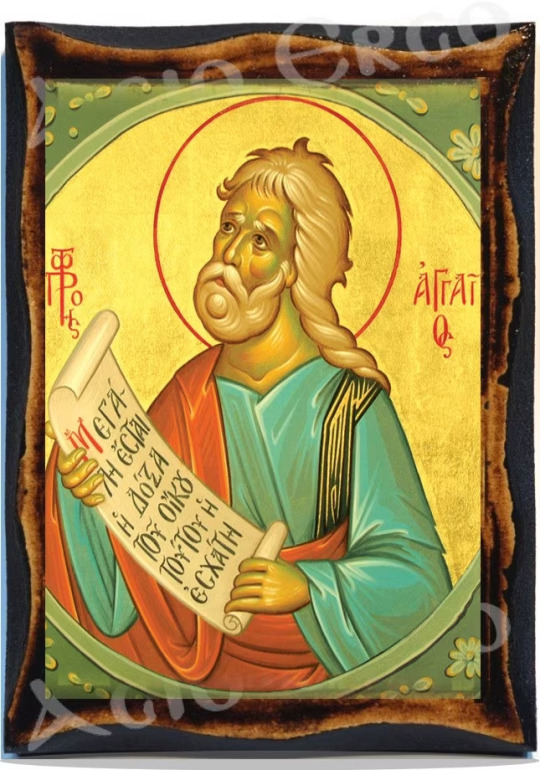
The Holy Prophet Haggai was the tenth of the Twelve Minor Prophets. He was of the Tribe of Levi and he prophesied during the times of the Persian emperor Darius Hystaspis (prior to 500 B.C.). Upon the return of the Jews from the Babylonian Captivity, he persuaded the people to build the Second Temple at Jerusalem, and he proclaimed that the Messiah would appear in this Temple in the last times.
It is believed that Haggai was buried with the priests at Jerusalem, since he was descended from Aaron.
SAINT THEOPHANIA THE WONDERWORKER, WIFE OF EMPEROR LEO THE WISE (B893)
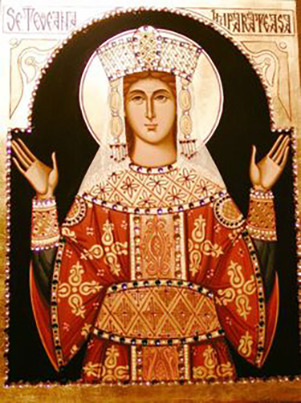
Saint Theophanó was a pious and virtuous Empress, who was greatly praised by the chroniclers of her time because of her evangelical life, her almsgiving, and her exceptional piety. She born in Constantinople, the daughter of Constantine Martinakios and his wife Anna, who raised their daughter with diligence. When she was of a marriageable age, Emperor Basil the Macedonian chose her to be the wife of his son Leo the Wise (886 - 912), with whom she dwelt in marital fidelity for twelve years.
The Holy Empress Theophanó and her husband Leo were imprisoned for three years, because Leo was falsely accused of plotting to assassinate his father, Emperor Basil. After obtaining her freedom,Theophanó spent her life in prayer and fasting, earnestly struggling for her salvation. She was recognized as a Saint and a wonderworker, even during her lifetime, because of the many good works which she performed out of love for her neighbor.
Though she lived in the world, she renounced everything worldly, and became a benefactor of the poor. She also built churches and monasteries, or restored those in need of repair. She was a true mother to her subjects, caring for widows and orphans, and consoling the sorrowful.
Despite all the grandeur and wealth surrounding her, she preserved her customary humility and modesty. She preferred to dress in simple clothing so that she would not recognized. Accompanied by two trusted servants, she would visit the homes of the poor and the persecuted, offering her assistance. Her faith was such that she was found worthy of the gift of performing miracles. When medical science gave up on a patient because it could not heal him, Saint Theophanó restored him to health. In spite of all the bitterness she had experienced in her life, Saint Theophanó could still sing praises to the Lord, according to the words of the Prophet King David: "Sing praises to the Lord, sing praises; sing praises to our King, sing praises" (Psalm 46/47:6).
Saint Theophanó reposed circa 893-894. Even before her death, her husband started to build a church, intending to dedicate it to Theophanó, but she forbade him to do so. It was Emperor Leo who decreed that the Sunday after Pentecost be dedicated to All Saints. Believing his wife to be one of the righteous, he knew that she would also be honored whenever the Feast of All Saints was celebrated.
The incorrupt relics of Saint Theophanó are preserved in the Patriarchal Church of Saint George, at the Phanar in Constantinople. A particle from her relics is in Dionysiou Monastery on Mount Athos.
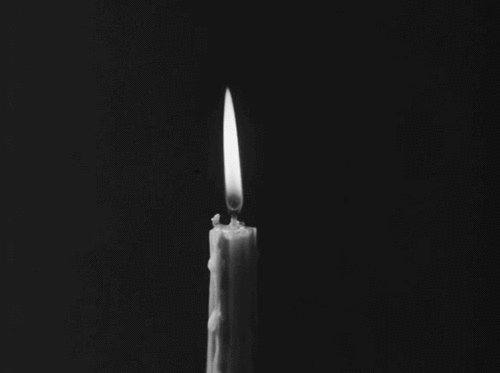
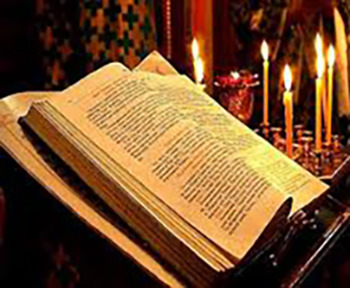
MARK 9:10-16
10 So they kept this word to themselves, questioning what the rising from the dead meant. 11 And they asked Him, saying, "Why do the scribes say that Elijah must come first?" 12 Then He answered and told them, "Indeed, Elijah is coming first and restores all things. And how is it written concerning the Son of Man, that He must suffer many things and be treated with contempt? 13 But I say to you that Elijah has also come, and they did to him whatever they wished, as it is written of him. 14 And when He came to the disciples, He saw a great multitude around them, and scribes disputing with them. 15 Immediately, when they saw Him, all the people were greatly amazed, and running to Him, greeted Him. 16 And He asked the scribes, "What are you discussing with them?"
HEBREWS 7:1-6
1For this Melchizedek, king of Salem, priest of the Most High God, who met Abraham returning from the slaughter of the kings and blessed him, 2 to whom also Abraham gave a tenth part of all, first being translated "king of righteousness," and then also king of Salem, meaning "king of peace," 3 without father, without mother, without genealogy, having neither beginning of days nor end of life, but made like the Son of God, remains a priest continually. 4 Now consider how great this man was, to whom even the patriarch Abraham gave a tenth of the spoils. 5 And indeed those who are of the sons of Levi, who receive the priesthood, have a commandment to receive tithes from the people according to the law, that is, from their brethren, though they have come from the loins of Abraham; 6 but he whose genealogy is not derived from them received tithes from Abraham and blessed him who had the promises.
#orthodoxy#orthodoxchristianity#easternorthodoxchurch#originofchristianity#spirituality#gospel#bible#wisdom
2 notes
·
View notes